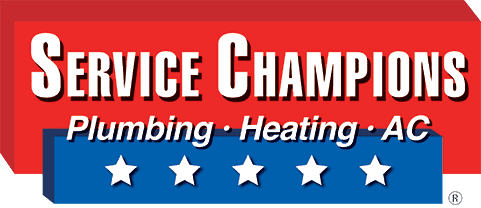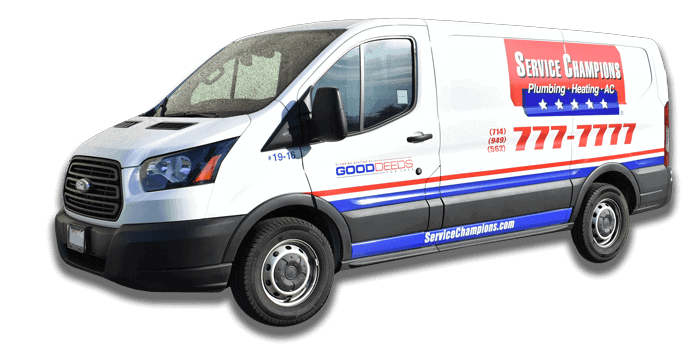A Guide to HVAC Air Filters and Ratings
Finding HVAC air filters for your home can be a daunting task. There are so many options with confusing numbers and ratings. While these numbers overwhelm some, they are meant to simplify your selection. In fact, many of these numbers mean the same thing.
What types of ratings and numbers will homeowners find for HVAC air filters?
- Microns and particulate matter
- MERV
- MPR
- FPR
- HVAC air filters dimensions
The dimensions of HVAC air filters include the length, width and height. These dimensions for HVAC air filters are expressed as L x W x H, and are printed directly on the box and air filter themselves.
First, Understand Particulate Matter and Microns
A micron, also known as a micrometer, is a unit of length equal to one millionth of a meter. In the case of HVAC air filters, microns are used to measure the diameter of air particulates.
To put this into context, the human eye cannot see anything smaller than 40 microns in size.
- Fine sand is about 90 microns in diameter
- Human hair is about 50 microns in diameter
- Dust, pollen and microbiological growth are typically 10 microns in diameter
- Skin flakes are about 5 microns in diameter
- Combustion particles, on average, are about 2.5 microns in diameter
- Fumes are less than one micron in diameter
When homeowners research HVAC air filters, they may see a number in relation to particulate matter. It may reads as PM with a number. This signifies Particulate Matter, followed by the micron measurement.
Why Should Homeowners Care about Particulate Matter and Microns?
“Particulate matter” is how air care professionals refer to the particles floating in your indoor air. The metric used to measure particulate matter—microns—relates to the type of HVAC air filters you need to achieve the type of indoor air quality and home comfort you want. In other words, your HVAC air filters need to be strong enough to capture the type and size of particles dirtying your home air.
For example, homeowners who have pets inside the home deal with additional pet dander and all the external allergens they bring into the house on a daily basis. These homes will need to use different HVAC air filters than homes without pets. Likewise, homes with indoor smokers versus those without will need different HVAC air filters to reach the same level of indoor air quality.
MERV Ratings for HVAC Air Filters
The acronym MERV stands for minimum efficiency reporting value. It is the standard rating system used by the HVAC industry. The American Society of Heating, Refrigerating and Air Conditioning Engineers, also known as ASHRAE, designed the MERV metric.
MERV ratings for HVAC air filters range from one to 20. However, for residential HVAC air filters, homeowners only need to be familiar with MERV ratings between one and 16.
The higher the number, the more efficient HVAC air filters are. MERV ratings communicate minimum efficiency, which means they rate the very least performance homeowners can expect.
HVAC air filters with a MERV rating between one and four offer minimal filtration. They capture particulate matter greater than 10.0 microns. These HVAC air filters are typically used for window units and residential areas.
HVAC air filters with MERV 1 to 4 capture at least:
- Pollen
- Dust mites
- Spray particles
- Carpet and textile fibers
HVAC air filters with a MERV rating between five and eight capture particulate matter between 3.0 and 10.0 microns. These HVAC air filters are usually applied to residential homes, workplaces and buildings.
HVAC air filters with MERV 5 to 8 capture at least:
- Microbiological growth
- Hair sprays and fabric protectors
- Cement and pudding mixes
HVAC air filters with a MERV rating between nine and 12 capture particulate matter between 1.0 and 3.0 microns.
HVAC air filters with MERV 9 to 12 capture at least:
- Legionella (pneumonia)
- Humidifier dust (mineral dust)
- Flour
- Emissions and fumes
HVAC air filters with a MERV rating between 13 and 16 capture particulate matter between .30 and 1.0 microns.
HVAC air filters with MERV 13 and 16 capture at least:
- All bacteria
- Tobacco smoke
- Sneeze particle
MERV is the most standard method of measuring the filtration efficiency of HVAC air filters.
MPR Ratings for HVAC Air Filters
The acronym MPR stands for micro-particle performance rating. It was created by the manufacturer 3M for HVAC air filters. The MPR is expressed in number. It indicates how efficient it is at removing particles that are between 0.30 and 1.0 micron in size.
The MPR rating only measures the efficiency of removing particles within this micron range because particles between 0.30 and 1.0 micron make up 99 percent of all airborne particulate matter.
- MPR 300 (equal to MERV 6)
These HVAC air filters capture about 35 percent of all indoor air pollutants between 3 and 10 microns. This includes larger household allergens like dust.
- MPR 600 (equal to MERV 7)
These HVAC air filters catch up to 65 percent of particles between 3 and 10 microns. This includes allergens like dust mites, pollen and debris.
- MPR1000 (equal to MERV 11)
These HVAC air filters catch up to 80 percent of airborne particles between 3 and 10 microns. They are capable of catching larger allergens as well as smaller particulate matter like smog and bacteria.
- MPR 1200 (equal to MERV 11)
These HVAC air filters are able to remove 85 percent of all airborne particles between 3 and 10 microns. They remove larger and smaller allergens. Additionally, they remove odors caused by cooking oils, cleaning chemicals, smoking, VOCs and pets or animals.
- MPR 1500 (equal to MERV 11)
These HVAC air filters remove up to 90 percent of all indoor air particles between 3 and 10 microns. MPR 1500 HVAC air filters capture both larger and smaller allergens, and even particles that carry odors and viruses.
- MPR 1900 (equal to MERV 12)
These HVAC air filters remove up to 93 percent of all airborne particles between 3 and 10 microns. They can remove larger allergen particles like microbiological growth, pet dander and other household particles. In addition, these HVAC air filters remove smaller allergens like viruses and bacteria.
- MPR 2200 (equal to MERV 13)
These HVAC air filters capture up to 94 percent of all airborne particles between 3 and 10 microns. They remove particles like viruses, odors, smoke, smog and bacteria.
- MPR 2800 (equal to MERV 14)
These HVAC air filters remove up to 97 percent of all airborne particles between 3 and 10 microns. They remove all bothersome indoor air pollutants at an increased efficiency rating.
As with other HVAC air filters, once MPR surpasses a certain level, the filtration efficiency improves in smaller increments. While many homeowners are eager to use full-strength HVAC air filters, it is not encouraged.
Unless your home absolutely needs high-rated MPR HVAC air filters, homeowners should utilize the proper HVAC air filters for their individual homes. Using HVAC air filters that are too strong for the home results in higher energy spending, resistance in airflow and lesser heating and air conditioning.
To determine what HVAC air filters best serve your home and lifestyle, consult your AC specialist.
FPR Ratings for HVAC Air Filters
The acronym FPR stands for filter performance rating. The FPR rating was developed by The Home Depot and is used for brands of HVAC air filters sold in its stores. FPR ratings are expressed in number and color.
The FPR ratings scale for HVAC air filters starts four and ends at 10. For example, HVAC air filters with FPR of 4 are “good” filters whereas HVAC air filters with FPR of 10 are “premium” filters.
According to The Home Depot,
HVAC air filters with FPR 4 remove particles like:
- Pollen
- Pet dander
- Dust, lint
- Dust mites
HVAC air filters with FPR 7 additionally remove particles like:
- Bacteria
- Microbiological growth
HVAC air filters with FPR 9 additionally remove particles like:
- Smoke
- Microscopic allergens
- Virus carriers
HVAC air filters with FPR 10 additionally remove particles like:
- Odors
- Smog
The FPR is used only by The Home Depot and applies only to brands of HVAC air filters they carry in their stores. As a result, homeowners typically will not see FPR values on HVAC air filters sold outside of The Home Depot. In addition, FPR values are much broader than MPR or MERV ratings. For homeowners new to HVAC air filters and caring for them, FPR values are a fantastic place to start.
A Side-by-Side-by-Side Comparison of Ratings for HVAC Air Filters
MERV 8 = MPR 600 = FPR 5
These HVAC air filters capture particulates like:
- Dust, dust mites
- Pollen
- Microbiological growth
MERV 11 = MPR 1000 to 1200 = FPR 7
These HVAC air filters additionally capture particulates like:
- Pet dander
- Smog
- Cough and sneeze particles
MERV 13 = MPR 1500 to 1900 = FPR 10
These HVAC air filters additionally capture particulates like:
- Smoke
- Viruses
- Bacteria
Find the Right HVAC Air Filters for Your Home with Service Champions
Service Champions Heating & Air Conditioning is the only Diamond Certified provider for Orange and Los Angeles Counties. We lead in air conditioning installations, repairs, maintenance and advanced air care solutions.
Our specialists are experts who can find the exact HVAC air filters for your home. By evaluating your home, home air, lifestyle and home comfort goals, Service Champions gets you the HVAC air filters that deliver.
Service Champions technicians always combine superior technical care with genuine customer service. We promise your total satisfaction.
To find your HVAC air filters, trust Service Champions. Complete the form below, or speak to our friendly call center representatives to schedule a visit.

